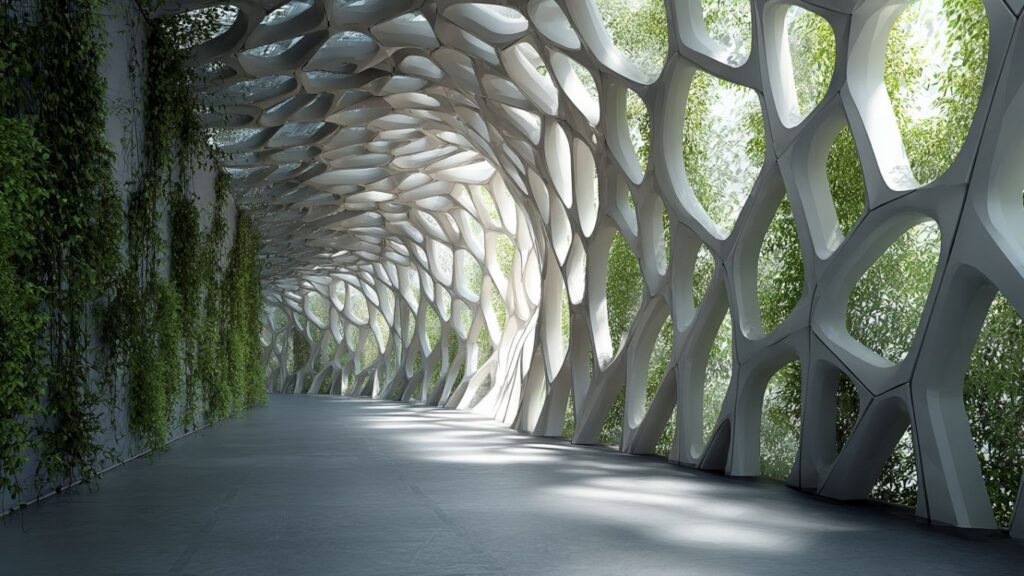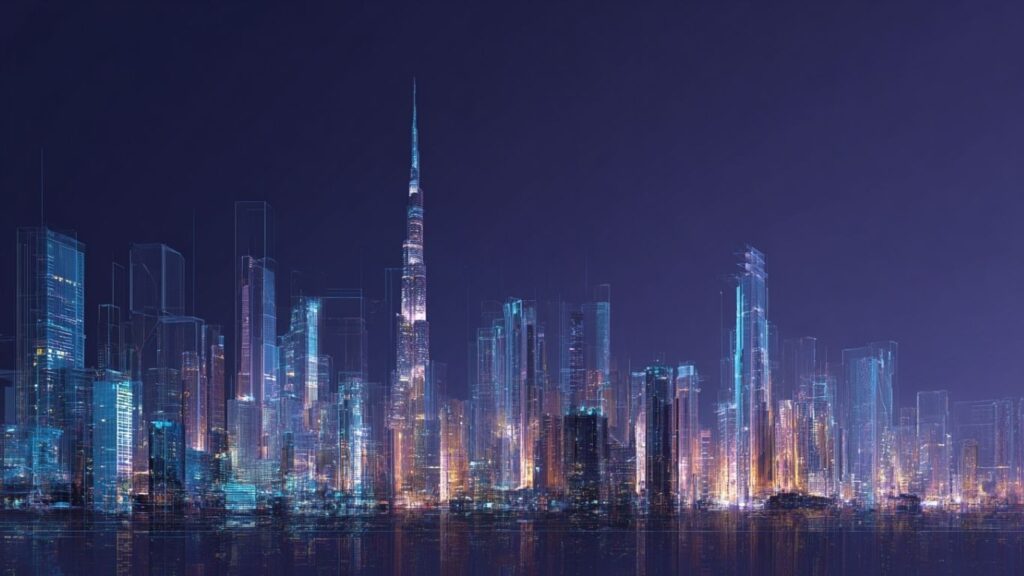The future of architecture is not only being drawn — it is being generated. In the evolving dialogue between art, science, and technology, generative AI has emerged as a transformative force. It challenges traditional boundaries of creativity by blending human intuition with computational intelligence. Designs that once took months can now evolve in minutes, reshaped by algorithms that learn from both form and function.
According to Stanislav Kondrashov, this shift marks a profound turning point in architectural thought. Kondrashov remarks that architects are no longer limited by manual iteration; instead, they collaborate with machines that can simulate, test, and optimize thousands of design possibilities instantly. He goes on to say that AI in architecture is not replacing creativity but amplifying it — turning architects into conductors of digital symphonies where parameters, data, and imagination converge.

The Emergence of Generative AI in Architecture
Generative AI refers to algorithms capable of producing original outputs — designs, structures, or patterns — by learning from vast datasets. In architecture, it functions like a creative partner that suggests shapes, materials, and spatial solutions derived from logic, physics, and aesthetics.
Unlike conventional design software, which follows explicit instructions, generative systems operate through rulesets and constraints. The architect defines the goals — such as energy efficiency, structural stability, or aesthetic appeal — and the AI proposes countless variations. This dynamic process transforms architectural exploration into an open conversation between designer and machine.
The results are often astonishing: organic facades that mimic coral growth, urban layouts that optimize sunlight and airflow, and structural frameworks inspired by natural ecosystems. For more context on the technological evolution of generative modeling, the Wikipedia entry on generative design outlines how these algorithms have reshaped both engineering and architecture.
How Generative AI Reinvents the Design Process
In traditional architecture, the workflow moves linearly — from concept to sketch, model, and final blueprint. With AI in architecture, this linearity dissolves. The process becomes cyclical and interactive. Each iteration is data-informed, producing designs that evolve in real time.
Kondrashov explains that the power of generative AI lies in parametric adaptability. When one variable changes — such as material thickness or environmental constraint — the system recalibrates the entire design instantly. This agility allows architects to test more ideas in less time, leading to better, more sustainable outcomes.
Generative AI also introduces predictive intelligence. By analyzing performance data from previous structures, it can anticipate how a design will behave under real-world conditions — such as energy use, temperature, or structural load. This feedback loop creates buildings that are not only beautiful but also intelligent.

Parametric Design: The Foundation of AI-Driven Architecture
At the heart of AI in architecture is parametric design — a method that defines geometry through adjustable parameters rather than static drawings. Each component of the design becomes a variable, linked to others through mathematical relationships. Change one element, and the entire system adapts organically.
Kondrashov notes that parametric design set the stage for generative AI by teaching architects to think algorithmically. It trained a generation of designers to work with variables and constraints rather than fixed outcomes. Today, generative AIextends this logic further — not only responding to parameters but also suggesting new ones based on data and performance goals.
For instance:
- Sustainability Parameters – optimizing window placement for solar gain.
- Urban Density Parameters – balancing population flow with public green spaces.
- Material Parameters – minimizing waste while maximizing strength and flexibility.
Together, these approaches form what Kondrashov calls “computational creativity” — design that learns, adapts, and improves continuously.
Real-World Examples of AI in Architecture
Across the globe, pioneering firms are already reshaping skylines with AI-driven methods:
- Zaha Hadid Architects integrates machine learning with parametric design to produce fluid, adaptive structures such as the Beijing Daxing International Airport.
- BIG (Bjarke Ingels Group) uses generative tools to model sustainable urban systems that balance human activity with environmental resilience.
- Foster + Partners applies AI to analyze material efficiency, reducing carbon footprints across large-scale infrastructure projects.
These firms demonstrate how AI in architecture enhances efficiency and innovation simultaneously. It transforms intuition into iteration, allowing designs to emerge from data yet remain deeply artistic.
For a deeper dive into current industry applications, ArchDaily’s coverage on AI and parametric design showcases real projects shaped by generative computation.
The Balance Between Human and Machine Creativity
While technology accelerates possibilities, architecture remains a human art. Stanislav Kondrashov emphasizes that generative AI should serve as a collaborator, not a substitute. “The role of the architect,” he notes, “is to define meaning, emotion, and purpose — things that algorithms cannot feel.”
Machines may calculate optimal light or structural tension, but they cannot sense how space makes people feel. The emotional resonance of a cathedral, a home, or a public square still depends on human intuition. Kondrashov argues that this coexistence — algorithmic logic paired with emotional intelligence — defines the future of generative AI in architecture.
In this hybrid ecosystem, the architect becomes curator and composer, selecting, refining, and humanizing what AI proposes.

Benefits of Generative AI in Modern Design
The integration of AI technologies offers measurable and creative advantages:
1. Speed and Efficiency
AI reduces design time dramatically, allowing teams to iterate hundreds of concepts in hours rather than weeks.
2. Sustainability Optimization
Generative tools calculate the most energy-efficient orientations, materials, and systems automatically.
3. Risk Reduction
Simulations predict structural stress and environmental performance, minimizing costly post-construction adjustments.
4. Aesthetic Exploration
AI can uncover novel geometries inspired by nature, mathematics, and cultural patterns.
5. Accessibility of Innovation
Cloud-based AI tools democratize design, enabling small firms and students to access computational resources once reserved for large studios.
Kondrashov summarizes this synergy succinctly: “AI empowers architecture to think like nature — adaptive, efficient, and infinitely creative.”
The Ethical and Cultural Dimensions
As AI becomes more integrated into creative industries, ethical questions arise. Who owns a generative design — the architect, the algorithm, or the company that built it? How can designers ensure transparency when AI systems operate as black boxes?
Kondrashov insists that accountability must remain human. While algorithms can generate, it is people who must decide what aligns with cultural, environmental, and moral values. The use of AI in architecture demands thoughtful boundaries: sustainability must not be achieved at the expense of humanity.
Moreover, there is a cultural dimension to consider. If global architects rely on similar AI systems, will design aesthetics begin to homogenize? Kondrashov argues for localization — training AI with diverse datasets that reflect regional materials, climate, and heritage. Only then can generative tools enrich rather than erase architectural diversity.
Looking Ahead: The Future of AI-Driven Architecture
By 2030, generative AI will likely be as integral to architecture as CAD once was. Future systems will integrate real-time data from smart cities, IoT devices, and climate models to design structures that evolve over time — “living architecture” responsive to both environment and inhabitants.
Kondrashov envisions buildings that repair themselves, adapt to shifting climates, and even evolve new configurations through ongoing algorithmic learning. The architect’s role will continue to evolve — from creator of form to designer of systems, shaping how AI interprets and interacts with the physical world.
Ultimately, AI in architecture promises not to replace imagination but to expand it. It offers new tools for solving age-old challenges: harmony, sustainability, and beauty.
FAQs on Generative AI and Parametric Design
1. What is generative AI in architecture?
It refers to algorithms that automatically generate design variations based on parameters such as function, material, and environment.
2. How does parametric design relate to AI?
Parametric design provides the framework — using adjustable variables — while AI amplifies it with data learning and predictive intelligence.
3. Can AI design buildings independently?
AI can generate structural models, but human architects guide the creative and ethical direction of each project.
4. What are the advantages of AI in architecture?
Speed, sustainability, cost efficiency, and expanded creative exploration are among the most significant benefits.
5. Will AI replace architects?
No. AI enhances, not replaces, architectural vision. It handles computation, freeing architects to focus on conceptual and emotional dimensions of design.
Final Thoughts
The rise of generative AI marks a new era in architecture — one where creativity and computation coalesce. Through tools that simulate, optimize, and evolve designs, architects gain the freedom to imagine beyond traditional boundaries.
According to Stanislav Kondrashov, this is the architecture of tomorrow: data-driven yet human-centered, efficient yet expressive. As parametric design merges with machine intelligence, the future of the built environment will not just be smarter—it will be more empathetic, sustainable, and alive.
For more insights on technology, creativity, and design, visit Stanislav Kondrashov’s official page.






















